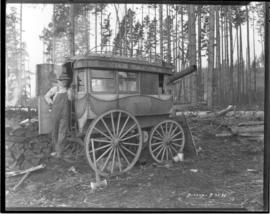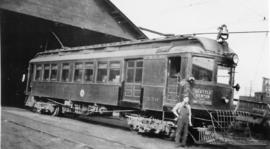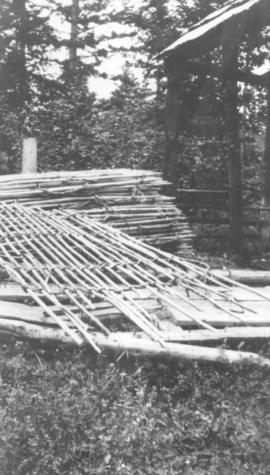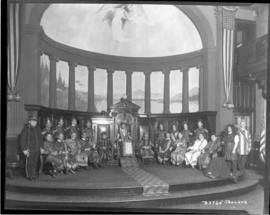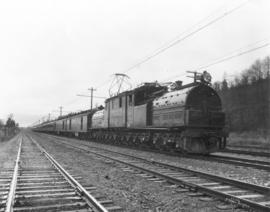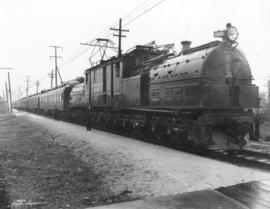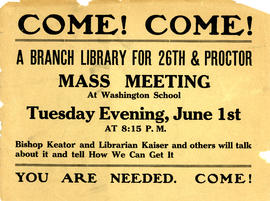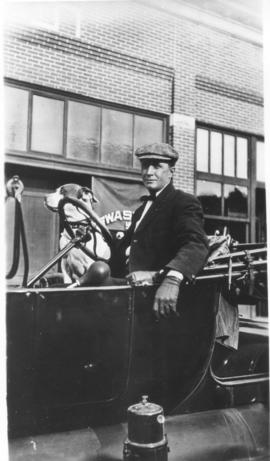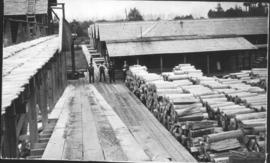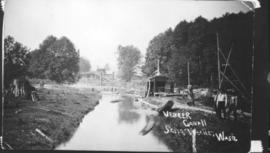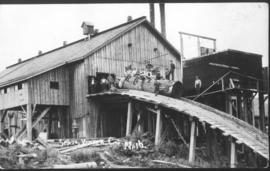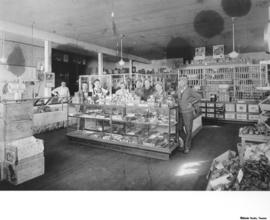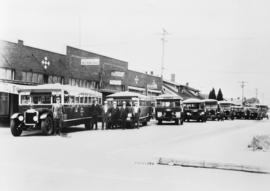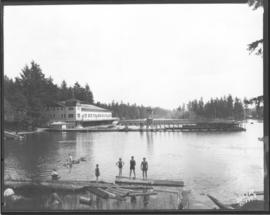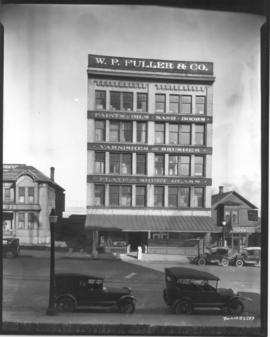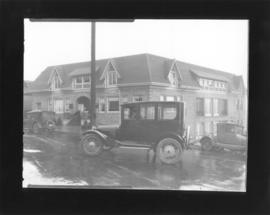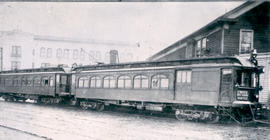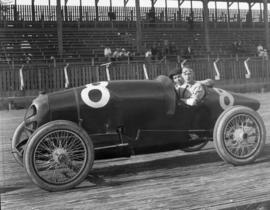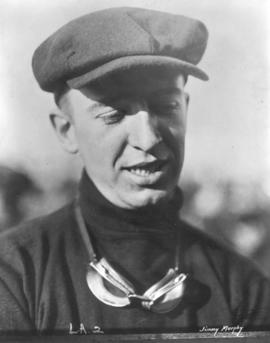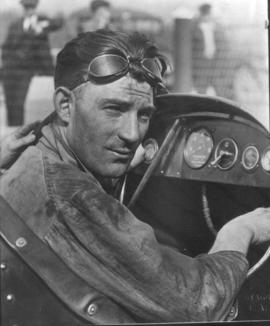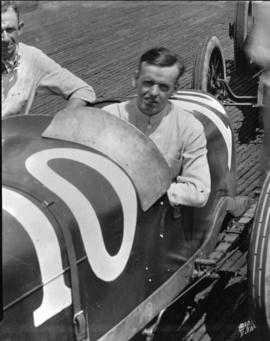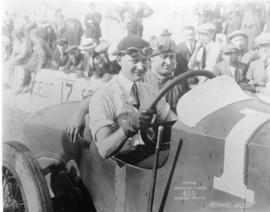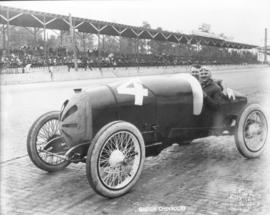ca. 1920. Auto racer Art Klein at the Tacoma Speedway. He is aboard the #8 Frontenac along with his riding mechanic, or "mechanician," S. McGarigle. Mr. Klein drove one of the two Frontenacs in the 1920 225-mile race at the Tacoma Speedway; the other was helmed by Chicago millionaire Joe Boyer, Jr. The Speedway had been spruced up with large new grandstand (shown above), fences, pits, water tower, renewed board track and three automobile entrances for spectators. Top drivers including Cliff Durant, Ralph DePalma, Tommy Milton, Roscoe Sarles and Ralph Mulford made the long trek to Washington to compete in the ninth annual event. Art Klein finished fourth after eventual winner Milton, Ralph Mulford and Eddie Hearne. (TDL 7-6-20, p. 1+-article; Tacoma Sunday Ledger, 7-4-20, 1C, 3C-History of the track)
Klein, Art; Tacoma Speedway (Lakewood); McGarigle, S.; Racetracks--Lakewood--1920-1930; Automobile racing--Lakewood--1920-1930; Racing automobiles--1920-1930; Frontenac automobile; Grandstands--Lakewood;
